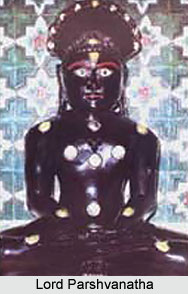 Shri Kukdeshvar Teerth located in Madhya Pradesh is a Jain pilgrimage centre. The teerth kshetra is situated in the Kukadeshar village. The temple is dedicated to Lord Parshvanatha, the twenty-third Jain Tirthankara.
Shri Kukdeshvar Teerth located in Madhya Pradesh is a Jain pilgrimage centre. The teerth kshetra is situated in the Kukadeshar village. The temple is dedicated to Lord Parshvanatha, the twenty-third Jain Tirthankara.
History of Shri Kukdeshvar Teerth
According to history Shri Kukdeshvar Teerth dates back to the ancient times. The teerth kshetra is believed to be 1050 years old. There is an inscription on the idol of the temple that suggests that it belongs to the year 1976 of the Vikram Samvat Era. The khetra is associated with many legends. As per a legend a Brahmin saw Parshvanatha as the future Tirthankara of the Jain religion. Thus he got constructed a beautiful idol of Lord Parshvanatha in memory of his last two births. Later he also installed in the temple. Kurkateshvar Parshvanatha is known in the popular language by the name, Kakadeshvar. Since its construction the temple has been renovated and repaired many times. The idol of Lord Parshvanatha is believed to possess miraculous powers. Devotees from far off places visit the temple to offer their prayers. It is believed that if prayed with all devotion the Lord fulfils the wishes of the pilgrims.
Temple of Shri Kukdeshvar Teerth
The temple of Shri Kukdeshvar Teerth houses the idol of Lord Kukadeshvar Parshvanatha. The temple has been magnificently decorated with intricate artistic designs. The creative temple work boast about the skills of the craftsmen. The walls and pillars of the temple have been adorned with specimens of ancient art. The idol of the Lord is almost 67 cm in height and is black in colour. It is seated in a padmasana posture and is surmounted by serpent hoods. The idol has been beautifully carved from a single stone and looks very appealing. The smiling face of the Lord looks very calm and serene.
The Temple of Shri Kukdeshvar Teerth organises many annual gatherings and functions. A fair is held here every year on the tenth day of the bright half of the month of Bhadrapad. There are provisions for dharamshalas or rest houses for the pilgrims. These are well equipped with all modern facilities. Apart from this there are Upashrays and Ayambilshala here. The temple is enclosed by scenic beauty that mesmerises and fascinates the pilgrims. The calm and tranquil environment and the surrounding greenery make it a suitable place for religious activities. The kshetra is well connected to road, rail and air. Taxi services and bus services are easily available here. The nearest railway station is located at Nimach which is located at a distance of 45 kilometres, Mandasor is at a distance of 60 kilometers and Ratlam is at a distance of 117 kilometers.




















